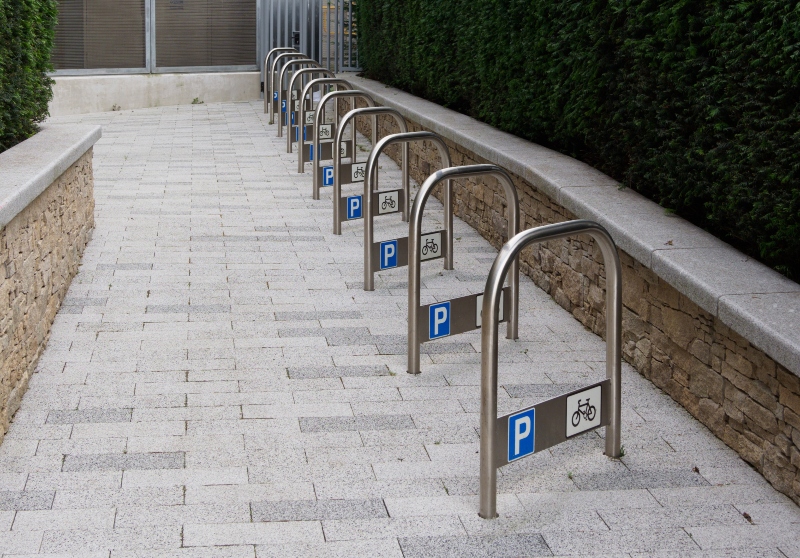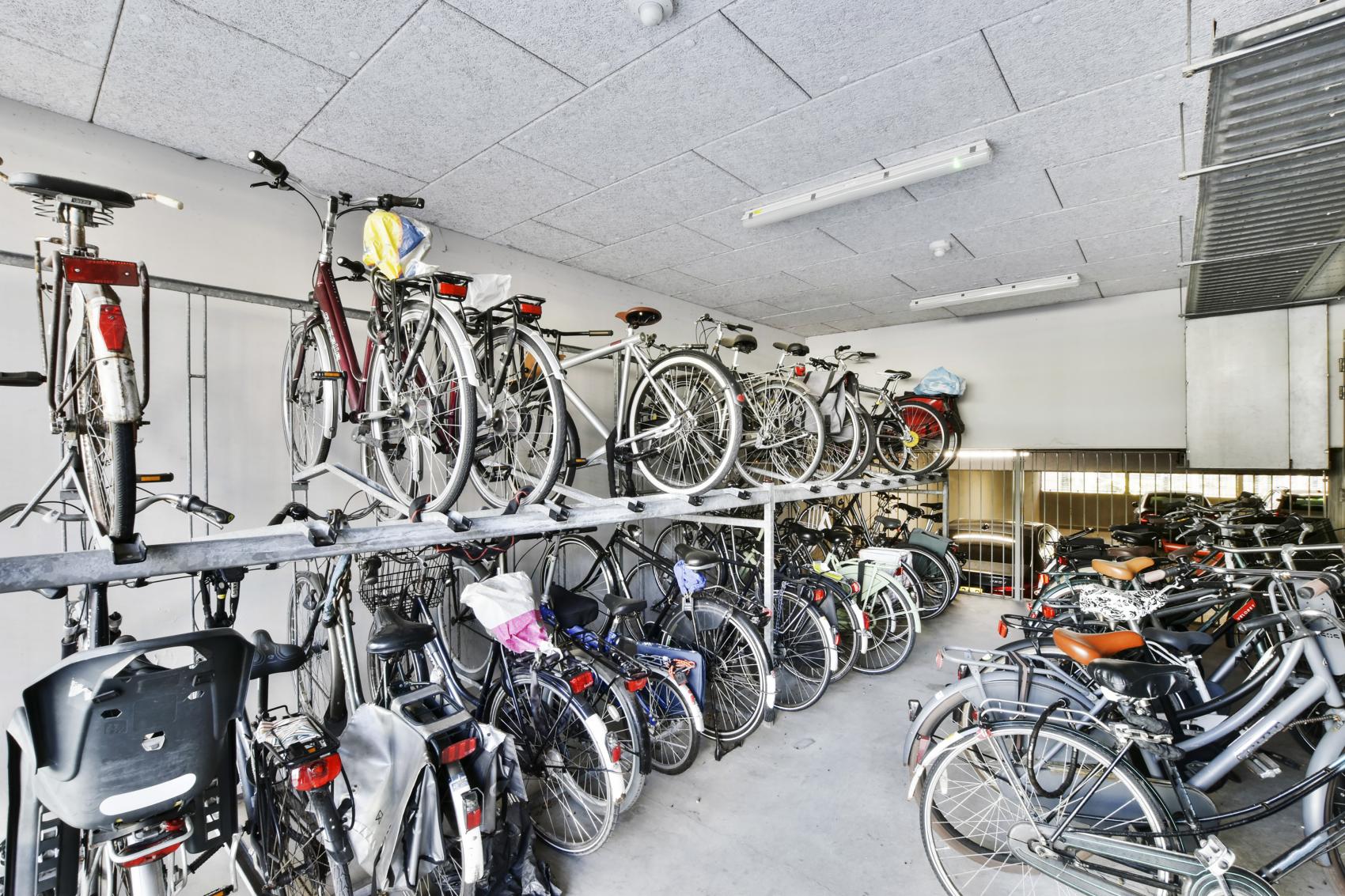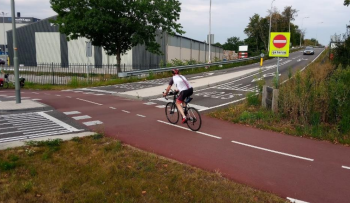
Default of two bicycle parking spaces per apartment rubberstamped as EU law takes final legislative hurdle
After receiving approval from the European Parliament in March, Member States recently adopted the Energy Performance of Buildings Directive (EPBD), marking the final legislative step at the European level. The European Cyclists' Federation (ECF) celebrates this groundbreaking legislation, which establishes, for the first time, minimum bicycle parking standards across various categories of residential and non-residential buildings throughout Europe.
On 12 April 2024, twenty EU member states endorsed the EPBD, while two (Italy and Hungary) opposed it, and five (Croatia, Czech Republic, Poland, Slovakia and Sweden) abstained. Upon publication in the Official Journal of the EU, member states will have a two-year window to integrate the EPBD into their national legislation, after which the new regulations will come into effect.

What regulators agreed upon
In December 2023, ECF reported the most important outcomes for cycling as part of the EPBD recast following negotiators reaching a provisional agreement. These are:
- For new residential buildings and those undergoing major renovation with more than three car parking spaces: At least two bicycle parking spaces for every residential building unit. A legally non-binding recital stipulates that the rule of two bicycle parking spaces per residential unit should also apply to buildings without car parking.
- For new non-residential buildings and those undergoing major renovation with more than five car parking spaces: Bicycle parking spaces represent at least 15% of the average or 10% of the total user capacity of the building. Space for bicycles with larger dimensions than standard bicycles, such as cargo bikes, should also be considered.
- For existing non-residential buildings with more than twenty car parking spaces: Bicycle parking spaces represent at least 15% of the average or 10% of the total user capacity of the building. Again, space for bicycles with larger dimensions than standard bicycles should be provided. These provisions for existing non-residential buildings have to be applied by 1 January 2027.
- For residential and non-residential buildings, specific requirements regarding charging infrastructure for all types of electric vehicles, including electric and bicycles, will become effective.
While the EPBD focuses on establishing quantitative standards for bicycle parking, it also mandates EU member states to provide technical assistance to building owners and tenants seeking to install recharging points and bicycle parking spaces. This directive effectively compels member states to supplement EU-mandated default quantitative standards with national qualitative norms for bicycle parking.
EU sets default, but national derogations apply
Similar to other EU Directives, member states retain the authority to invoke specific derogations, allowing them to limit or adjust the required number of bicycle parking spaces for certain types of non-residential buildings.
- Firstly, as for new residential buildings, “member states may, subject to an assessment by local authorities and taking into account local characteristics, including demographical, geographical and climate conditions, adjust requirements for the number of bicycle parking spaces.”
- Secondly, with regard to residential buildings undergoing major renovation, “where ensuring two bicycle parking spaces for every residential building unit is not feasible, member states shall ensure as many bicycle parking spaces as appropriate.”
- Thirdly, in the case of non-residential buildings (new, renovated and existing), “member states may adjust requirements for the number of bicycle parking spaces […] for specific categories of non-residential buildings that are not typically accessed by bicycles.”
The next 24 months will be pivotal in ensuring that member states transpose the EPBD in a manner that ensures responsible and limited utilisation of these derogations.
They will also face the challenge of adhering to the extensive mandate outlined in the directive: “Member states shall ensure the coherence of policies for buildings, active and green mobility, climate, energy, biodiversity and urban planning.” Previously, ECF has advocated for sustainable car parking standards to establish maximum rather than minimum norms.

Conclusion
Insufficient bicycle parking facilities have long hindered widespread cycling adoption. The EPBD marks a significant milestone in addressing this issue across the EU by establishing default minimum bike parking standards for nearly all types of residential and non-residential structures. Even so, the devil will be in the details when it comes to transposing the EPBD into national law and limiting possible derogations, such as for specific categories of non-residential buildings. The upcoming 24 months will be pivotal in navigating these intricacies.
Annexe: Overview table
|
|
Residential buildings |
Non-residential buildings |
|
Definition |
‘bicycle parking space’ means a designated space for parking at least one bicycle |
|
|
Bike parking in new and renovated buildings |
At least two bicycle parking spaces for every residential building unit Trigger point: 3 car parking spaces Non-binding recital: Two spaces per dwelling should also apply where there is no car parking |
Bicycle parking represents 15% of average or 10% of total user capacity of the building Trigger point: Five car parking spaces |
|
Bike parking in existing buildings |
N/A |
Bicycle parking representing 15% of average or 10% of total user capacity of the building by 1 January 2027 Trigger point: 20 car parking spaces |
|
Cargo bikes |
No |
Yes |
|
E-charging infra |
Yes |
Yes |
|
Derogations |
“Member states may, subject to an assessment by local authorities and taking into account local characteristics, including demographical, geographical and climate conditions, adjust requirements for the number of bicycle parking spaces.” “Where, in the case of major renovation, ensuring two bicycle parking spaces for every residential building unit is not feasible, Member States shall ensure as many bicycle parking spaces as appropriate.” |
“Member states may adjust requirements for the number of bicycle parking spaces […] for specific categories of non-residential buildings that are not typically accessed by bicycles.”
|
|
Coherence with other policy areas |
“Member states shall ensure the coherence of building policies, active and green mobility, climate, energy, biodiversity and urban planning.” |
|
|
Technical assistance |
“Member states shall ensure the availability of technical assistance for building owners and tenants wishing to install recharging points and bicycle parking spaces.” |
|
Contact the author
Recent news!
Contact Us
Avenue des Arts, 7-8
Postal address: Rue de la Charité, 22
1210 Brussels, Belgium









